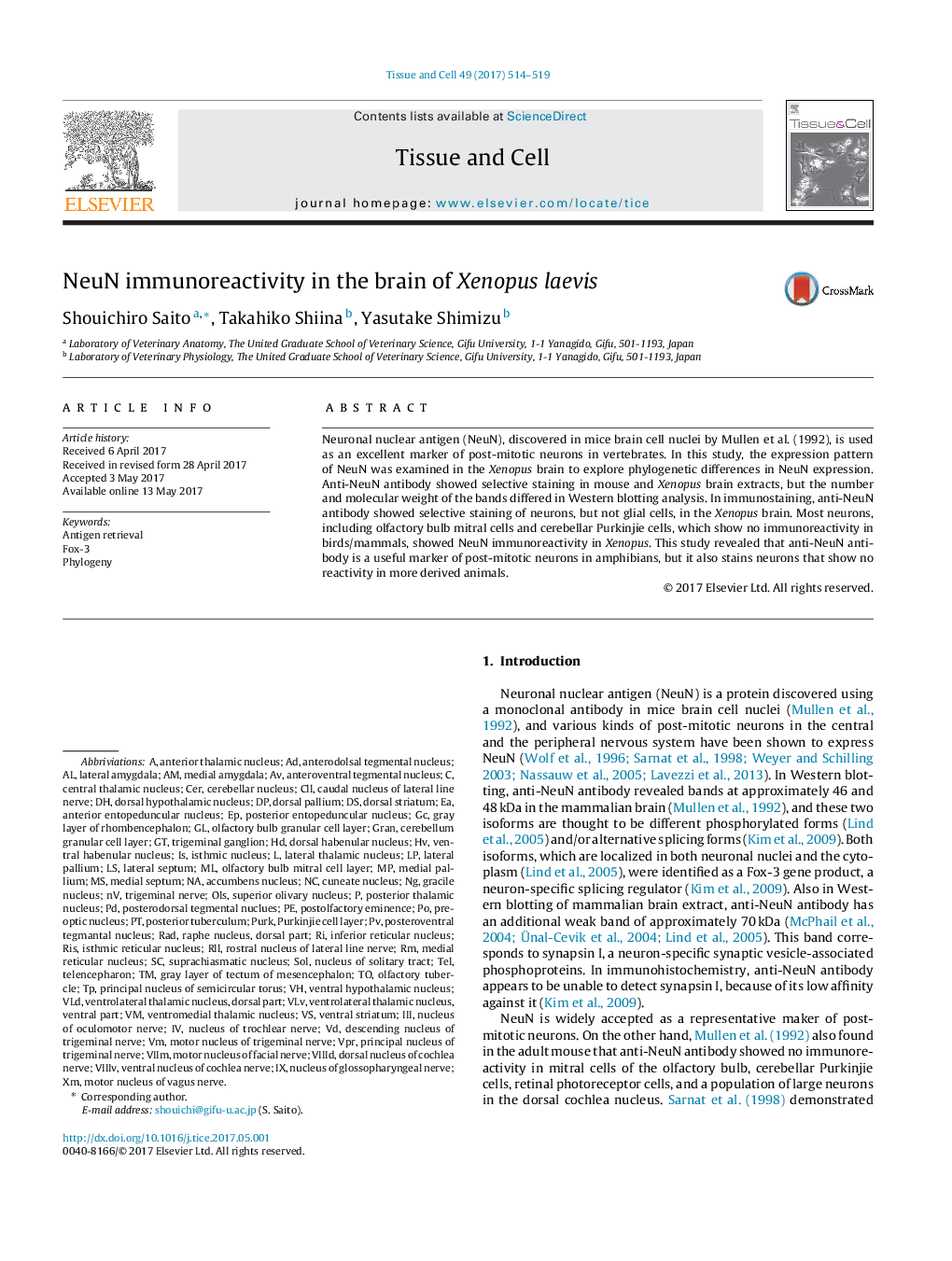| Article ID | Journal | Published Year | Pages | File Type |
|---|---|---|---|---|
| 5535059 | Tissue and Cell | 2017 | 6 Pages |
â¢NeuN immunoreactivity is observed as a single band with an approximate mass of 100 kDa in Xenopus brain extract using Western blotting.â¢The olfactory bulb mitral cells and cerebellar Purkinjie cells of Xenopus show NeuN immunoreactivity, although those of birds/mammals show no reactivity.â¢Anti NeuN antibody may not bind to synapsin I in amphibian brain.
Neuronal nuclear antigen (NeuN), discovered in mice brain cell nuclei by Mullen et al. (1992), is used as an excellent marker of post-mitotic neurons in vertebrates. In this study, the expression pattern of NeuN was examined in the Xenopus brain to explore phylogenetic differences in NeuN expression. Anti-NeuN antibody showed selective staining in mouse and Xenopus brain extracts, but the number and molecular weight of the bands differed in Western blotting analysis. In immunostaining, anti-NeuN antibody showed selective staining of neurons, but not glial cells, in the Xenopus brain. Most neurons, including olfactory bulb mitral cells and cerebellar Purkinjie cells, which show no immunoreactivity in birds/mammals, showed NeuN immunoreactivity in Xenopus. This study revealed that anti-NeuN antibody is a useful marker of post-mitotic neurons in amphibians, but it also stains neurons that show no reactivity in more derived animals.
Graphical abstractDownload high-res image (144KB)Download full-size image
